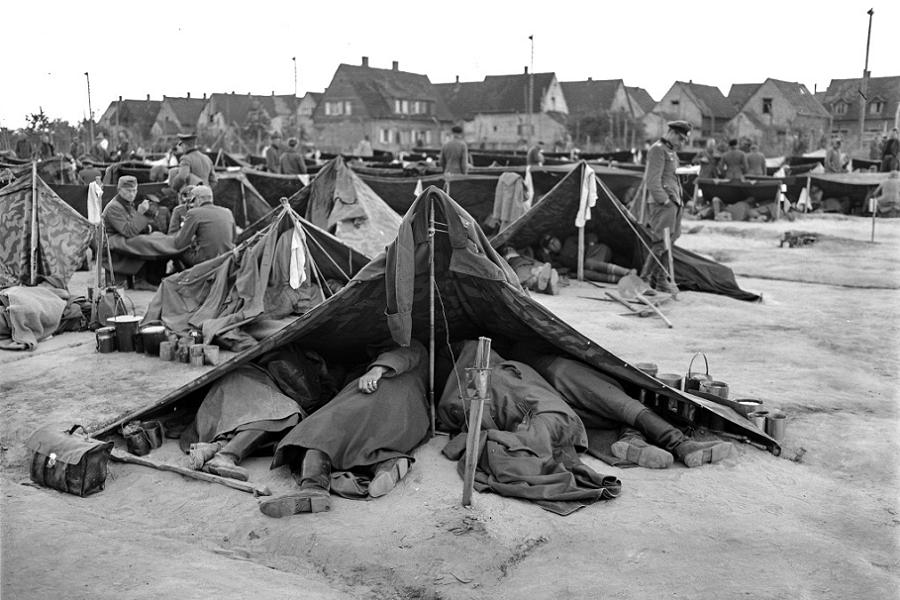Denial and Subversion

Wikimedia CommonsConditions varied at each camp, but dugout shelters covered with clothing and scraps of cloth were typical in the crowded makeshift enclosures.
The unpleasant details Ambrose would admit about the Rheinwiesenlager camps barely scratch the surface.
Allied forces would usually strip search and interrogate men designated as DEFs before admitting them to the camps. Much of the time, the American or British officers conducting the interrogations staged them to make the German (who was usually tired and hungry, deprived of sleep and wholly ignorant of the American and British justice systems) think he was on trial for his life and could only save himself or his family by confessing to whatever crimes he was being asked about.
Official marched the vast majority into barbed-wire enclosures and abandoned them — prisoners rarely received food or water, let alone fresh clothes, and shelter was whatever size hole they could dig with their hands.
Men who approached the perimeter wire to beg for provisions ran the risk of being shot as attempted escapees, but those who didn’t could easily starve to death or die of the typhus, cholera, and other illnesses endemic to the Rheinwiesenlager camps.
Both the International Committee of the Red Cross (ICRC) and German civilians (short on food themselves) sent what aid they could. Still, camp officials flatly refused the ICRC entry to the camps and told them the DEFs had plenty of food without their help.
Nobody seems to know what happened to the civilian food parcels, though the guards never reported food shortages themselves, and it’s possible some parcels were distributed to French civilians near the border. The men in the camps got nothing, and soon they began to die.
No known, existing records show exactly how many German veterans died in the Rheinwiesenlager camps. The Army claimed after the war that it was impossible to track millions of prisoners under those conditions, and thus said that no detailed paperwork was even attempted. Later revelations showed that in fact the Army did keep files on the men, but that around 8 million documents were destroyed after the camps closed.
The closest researchers can get is in the “Other Losses” column of the Army’s records, showing discrepancies in the weekly prisoner count of sometimes tens of thousands of men who vanished from one head count to the next. This miscellaneous column, which gave Bacque the title of his book, excluded releases and escapes, as well as the majority of prisoner transfers, so no official explanation exists as to where hundreds of thousands of DEFs went during the months that the Rheinwiesenlager camps were operating.
Ambrose’s team issued a scathing indictment of Bacque’s work, asking in what they thought was a rhetorical tone where those million dead bodies went, since it’s presumably difficult to hide seven-figure death tolls in the Rhineland.
Nobody knows for sure what the answer to that question is, even today, but since 1945 the French and German governments have enforced a blanket ban on excavations across large swathes of their border territories where the camps were located. Official U.S. government statistics on the death tolls range between just 3,000 and 6,000.
The U.S. Army occupation forces established these exclusion zones at the end of the war, used them for “unknown” purposes throughout 1945, and then restricted them forevermore as war graves. No one is allowed to dig in these areas, and it seems no one ever has, so it is possible that the answer to the historians’ question lies buried under the trees of the Rhine River Valley to this day.
Fascinated by this look at the Rheinwiesenlager? Brush up on more (often covered up) history with our posts on the worst war crimes and Leopold II’s Congo genocide that no one talks about.





